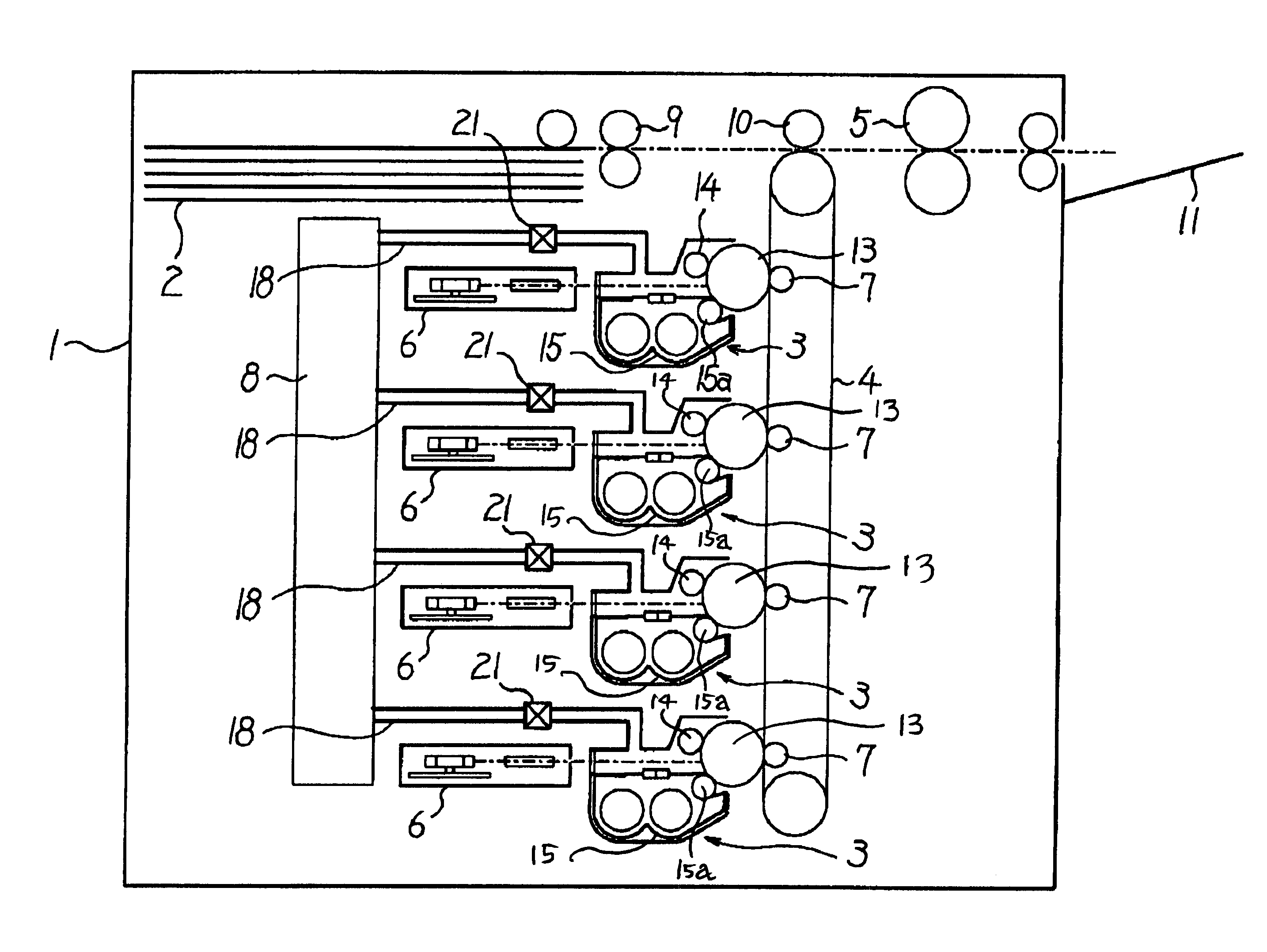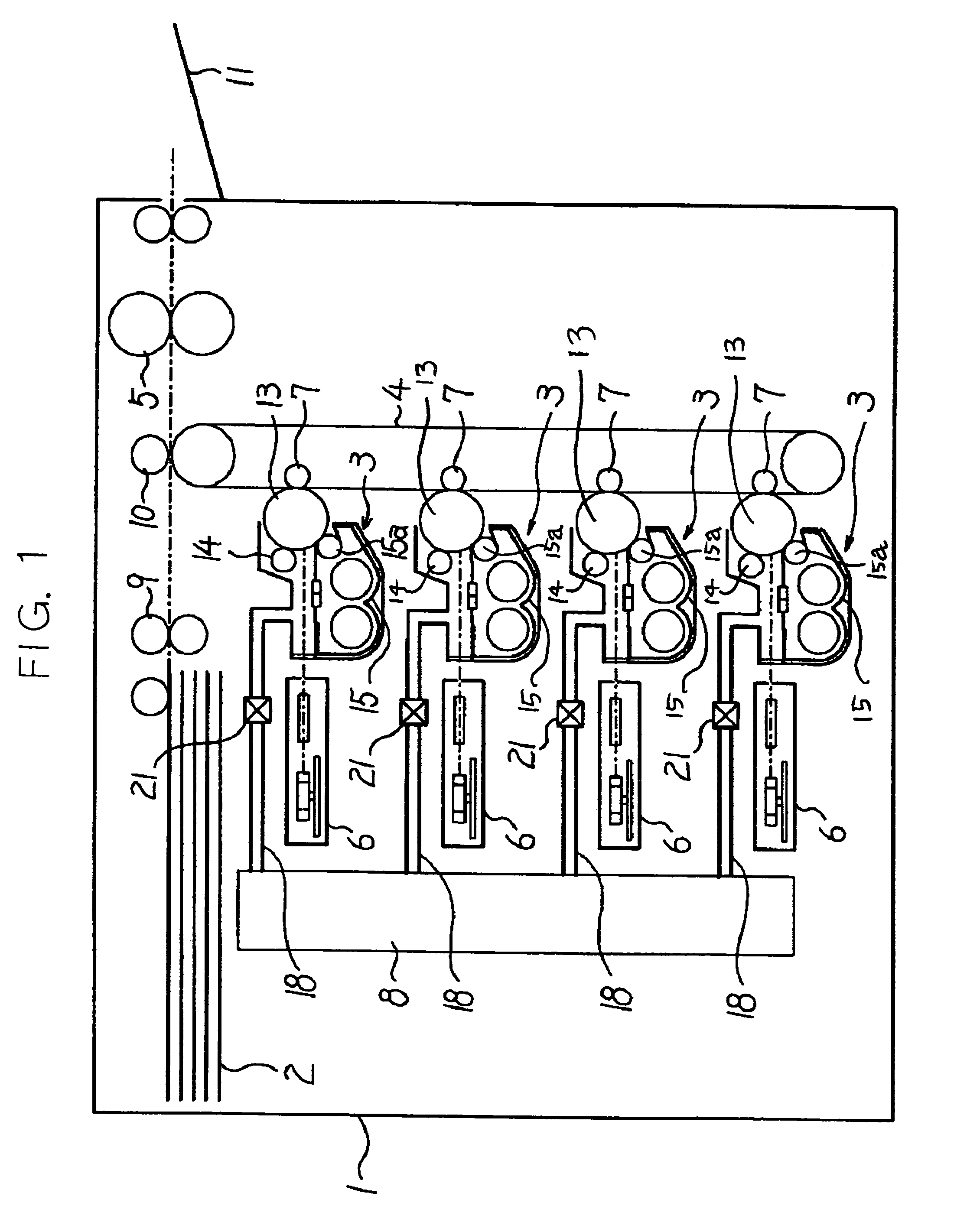Electrophotographic image forming apparatus having residual toner collection
- Summary
- Abstract
- Description
- Claims
- Application Information
AI Technical Summary
Benefits of technology
Problems solved by technology
Method used
Image
Examples
Embodiment Construction
[0022]Referring to FIG. 1 of the drawings, an electrophotographic image forming apparatus embodying the present invention is shown and implemented as a tandem color image forming apparatus by way of example. As shown, the color image forming apparatus includes a casing 1 accommodating a sheet feeding section 2, four image forming modules 3, an intermediate image transfer belt, or subject body, 4, a fixing unit 5, four exposing units 6, four image transferring devices 7, and an air conditioning unit 8. The sheet feeding section 2 is loaded with a stack of sheets or recording media. The four image forming modules 3, removably mounted to the casing, each form a toner image with toner of particular color, i.e., yellow (Y), magenta (M), cyan (C) or black (K). The four exposing units 6 each are assigned to one of the image forming modules 3.
[0023]The four image transferring devices 7 respectively transfer toner images formed by the four image forming modules 3 to the intermediate image tr...
PUM
 Login to View More
Login to View More Abstract
Description
Claims
Application Information
 Login to View More
Login to View More - R&D
- Intellectual Property
- Life Sciences
- Materials
- Tech Scout
- Unparalleled Data Quality
- Higher Quality Content
- 60% Fewer Hallucinations
Browse by: Latest US Patents, China's latest patents, Technical Efficacy Thesaurus, Application Domain, Technology Topic, Popular Technical Reports.
© 2025 PatSnap. All rights reserved.Legal|Privacy policy|Modern Slavery Act Transparency Statement|Sitemap|About US| Contact US: help@patsnap.com



